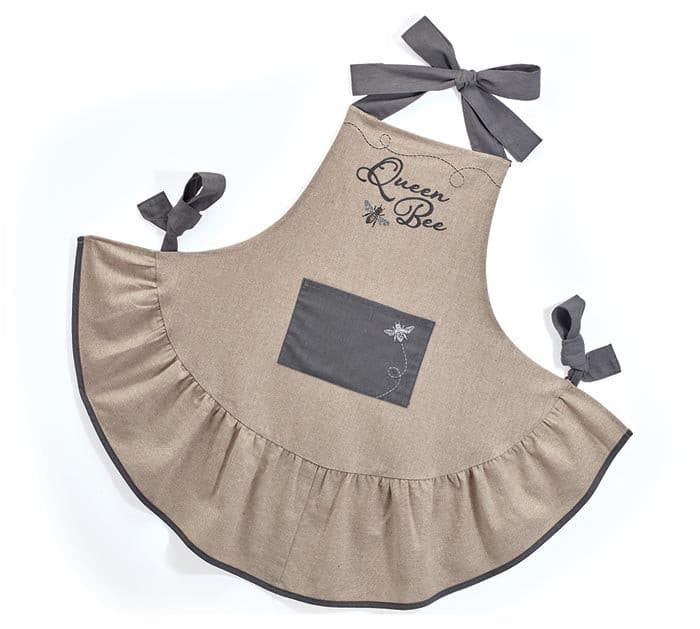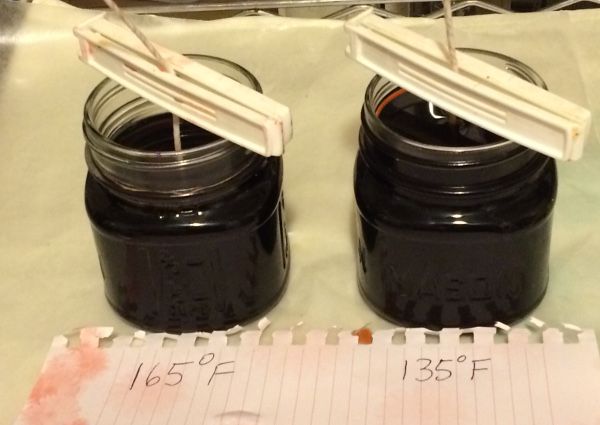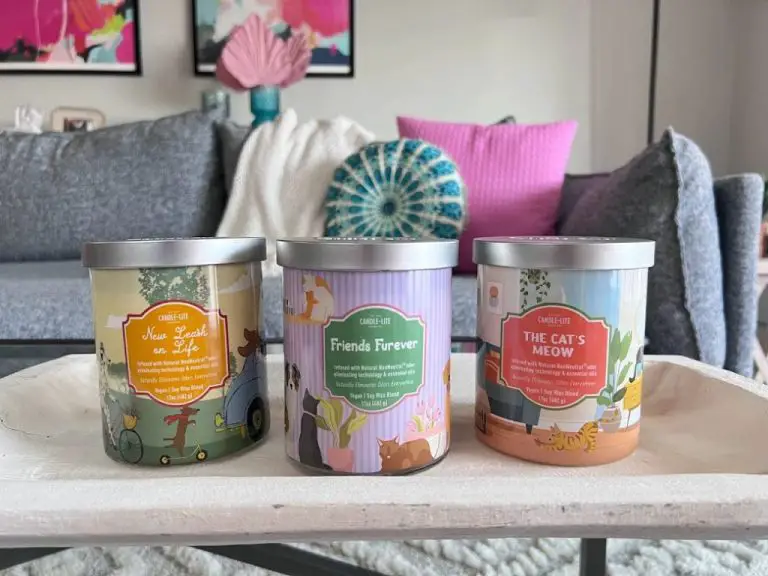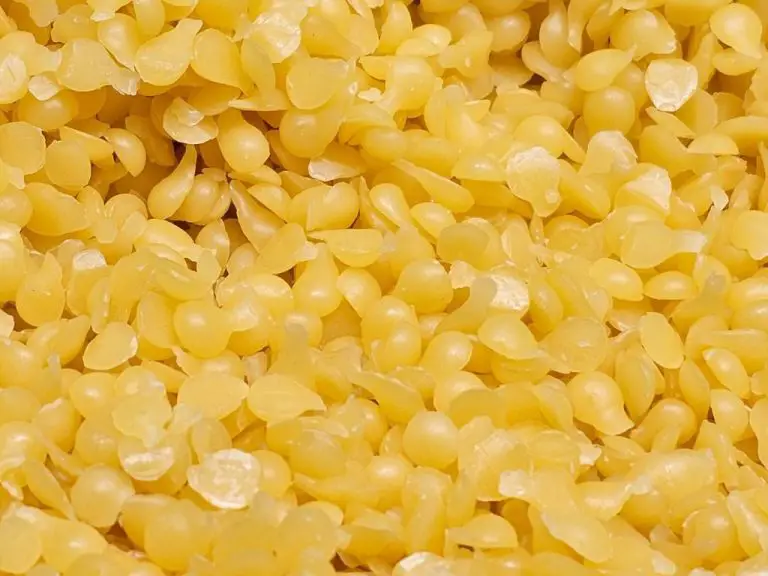What Kind Of Wax Is In Frasier Fir Candles?
Frasier fir candles have become a popular holiday tradition over the past decade. Known for their crisp, evergreen scent, Frasier firs are a type of balsam fir native to the mountains of North Carolina. The popularity of Frasier fir candles took off in 2004 when home fragrance company Thymes introduced their iconic Frasier Fir scent. According to an article on Startribune.com, “in the 13 years since its Frasier Fir candle was introduced, sales of the woodsy cedar and pine scent have shot up by double digits nearly every year” (https://www.startribune.com/the-frasier-fir-candle-the-smell-of-christmas-started-in-minnesota/462901643/). Frasier fir candles evoke the fresh, wintry aroma of a real Christmas tree. This article will examine the types of wax commonly used in Frasier fir candles and the benefits and drawbacks of each.
Frasier Fir Candles
The iconic Frasier fir candle originated in Minnesota in 1989 when a small candle company called Thymes decided to create a candle capturing the essence of a fresh-cut Frasier fir Christmas tree (Thymes). According to an article in the Star Tribune, Thymes founders Leslie and Linda Westrom worked with local perfumers to develop the distinctive Frasier fir scent, which combines Siberian fir, cedar, and sandalwood (Startribune).
Since its debut, the Frasier fir candle has become one of the most popular holiday candles, synonymous with the smells of Christmas. As described on the Thymes website, the Frasier fir candle’s crisp, woodsy aroma evokes nostalgic memories of Christmases past while creating cozy anticipation for the holidays to come (Thymes). The candle’s distinctive look, with a fir tree depicted on its label, adds to its nostalgic holiday appeal.
Frasier fir candles are now produced by many brands, but Thymes remains the original creator of this beloved scent. During the holiday season, the candles are ubiquitous in homes and stores, their woodsy, piney aroma instantly conjuring up visions of sparkling trees, stockings hung by the fire, and other hallmarks of a traditional Christmas.
Candle Wax Types
There are several common types of wax used for candle making:
Paraffin Wax
Paraffin wax is the most widely used candle wax. It is a byproduct of petroleum refining and is highly refined and odorless (Source: https://www.marthastewart.com/8061950/candle-wax-type-guide). The pros of paraffin wax are that it is inexpensive, readily available, and easy to work with. The cons are that paraffin releases more soot and smoke when burning compared to natural waxes.
Soy Wax
Soy wax is made from hydrogenated soybean oil. It burns cleaner than paraffin with less soot and smoke. However, soy wax is softer than paraffin so it may not hold fragrance as well over time (Source: https://www.marthastewart.com/8061950/candle-wax-type-guide). Soy wax also needs to be heated to a higher temperature for pouring compared to paraffin.
Beeswax
Beeswax is a natural wax made by honey bees. It has a pleasant natural honey scent when burning. Beeswax candles burn slowly and emit negative ions which help purify the surrounding air. However, beeswax is expensive and can be challenging to work with due to its high melting point (Source: https://www.marthastewart.com/8061950/candle-wax-type-guide).
There are pros and cons to each type of candle wax. The choice often depends on the candle purpose, fragrance used, cost, and personal preferences.
Paraffin Wax
Paraffin wax is a petroleum-based wax made from refining crude oil. It is odorless, colorless, and burns cleanly (Source: https://blendedwaxes.com/blog/soy-vs-paraffin-candles/). Paraffin wax has many properties that make it a good choice for candle making. It has an excellent capacity to hold fragrance, providing candles with a strong scent throw. The wax also has a high melting point, which allows candles to retain their shape in warm environments. Additionally, paraffin wax is inexpensive compared to natural waxes.
However, paraffin wax has some drawbacks. Some criticize it as a petroleum product that is not environmentally-friendly. There are also concerns that burning paraffin candles releases harmful chemicals like toluene and benzene into the air (Source: https://www.slatkinandco.com/blogs/the-slatkin-summary/soy-wax-vs-paraffin-wax-which-is-better). More research is needed to determine the extent of potential health risks.
Why Paraffin for Frasier Firs?
Paraffin wax is commonly used in Frasier fir candles because it has properties that complement the fresh, crisp aroma of the fir needles. Paraffin wax has very little scent of its own, allowing the natural Fraiser fir fragrance to shine through.
Paraffin is also relatively inexpensive compared to other waxes like beeswax or soy wax. This helps keep costs down for candle makers working with the premium Fraiser fir oils. The affordability of paraffin makes Frasier fir candles accessible at lower price points.
Additionally, paraffin wax has a low melting point which makes it easy to work with. This enables quick and efficient candle production, important for meeting seasonal holiday demand for Frasier fir candles. The wax can be quickly melted, fragranced, and poured into containers with wicks at a rate necessary for profitable candle making.
In summary, paraffin wax is commonly used for Frasier fir candles because it allows the natural fir aroma to take center stage thanks to its neutral scent and low cost. The ease of working with paraffin also enables efficient candle production to meet seasonal demand.
Beeswax Alternative

Beeswax is a natural wax made by honey bees. It has some benefits over paraffin wax:
- Beeswax is hypoallergenic and non-toxic, while paraffin can irritate allergies or sensitivities (https://beehivecandles.com/help/beeswax-vs-paraffin/).
- Beeswax candles burn brighter and emit a light more similar to natural sunlight (https://beeswaxco.com/beeswax-candles/benefits-beeswax-candles-vs-paraffin/).
- Beeswax is a renewable and sustainable material, while paraffin is a petroleum byproduct.
However, beeswax is not commonly used for Frasier fir candles. Beeswax is significantly more expensive than paraffin wax. The higher material costs would drive up the retail price, making beeswax Frasier firs less affordable and competitive in the marketplace.
Most consumers are satisfied with paraffin Frasier firs, and do not demand the extra benefits of beeswax enough to justify paying a premium price. So paraffin remains the standard wax for cost and performance reasons.
Soy Wax Alternative
Soy wax is made from soybean oil and is a popular natural alternative to paraffin wax. Some key facts about soy wax:
– Made from hydrogenated soybean oil (Simple Ness Collection)
– Typically blended with other waxes to modify properties
– Burns slower and cleaner than paraffin
– Natural, biodegradable and renewable resource
For Frasier fir candles specifically, soy wax has some benefits but also drawbacks:
– Provides excellent fragrance retention for fir oil aromas
– Slow burn preserves fragrance longer
– Natural soy wax aligns with fir candle branding
– More expensive than paraffin, increasing candle costs
– Slower melt point may not pool well in containers
– Brittle, requiring additives for fir candle containers
The higher cost of soy wax is the main downside for use in Frasier fir candles. While the natural branding has appeal, the performance drawbacks may outweigh the benefits compared to paraffin. Careful testing would be needed to create an optimal soy wax blend.
Other Natural Waxes
In addition to soy, beeswax, and coconut, there are a few other natural waxes that can be used for candle making:
- Palm wax comes from the leaves of palm trees and is harder than soy wax. It’s easy to work with and makes glossy candles, but can develop crystals over time (Source).
- Bayberry wax comes from the berries of the bayberry shrub. It has a pleasant, aromatic scent, but bayberry bushes are not common, making this a rarer option (Source).
While these natural waxes have some benefits, they are generally not the best choice for Frasier fir candles. The piney, woodsy scent of Frasier firs pairs best with relatively neutral waxes that won’t compete with the fir’s fragrance.
The Best Wax for Frasier Firs
When it comes to choosing the ideal wax for Frasier fir candles, paraffin wax rises above the rest as the top choice. Paraffin wax has many qualities that make it optimal for candles made from Frasier fir fragrance oils.
Paraffin is known for its excellent scent throw, which allows the beautiful fragrance of Frasier fir to shine through brightly when burning a candle. It also has a high melting point, which allows Frasier fir candles to burn evenly and prevents too much liquid wax pooling at the base as the candle burns down. Additionally, paraffin tends to be more cost effective than other natural wax options, keeping pricing reasonable for consumers. Its hard structure allows for self-trimming wicks and helps the candle retain its shape as it melts and solidifies during use. Finally, paraffin provides a clean, smokeless burn, which perfectly suits the fresh pine notes of Frasier fir fragrance (https://seventhavenuecandles.com/products/frasier-fir-thyme-candle-mini-tin).
With all of these favorable properties, paraffin wax is clearly the optimal choice when making candles using the beloved Frasier fir scent. Its ability to make the fragrance shine while providing excellent burn properties solidifies it as the best wax for capturing and enhancing this Christmas tree classic.
Conclusion
In summary, the standard wax used in Frasier fir candles is paraffin wax. Paraffin wax is a petroleum byproduct that provides excellent fragrance throw and burn characteristics for the tall, aromatic needles of the Frasier fir. It allows the scent and ambiance of the Frasier fir to properly permeate through the room.
While natural waxes like soy, beeswax, and bayberry can be used, they come with tradeoffs in performance, cost, and availability. Paraffin remains the preferred choice among professional candle makers and home crafters looking to make the highest quality Frasier fir candles.
In conclusion, paraffin wax is the standard for Frasier fir candles, prized for its performance, accessibility, and allowing the beloved scent of Frasier firs to be enjoyed year round through candle making.




